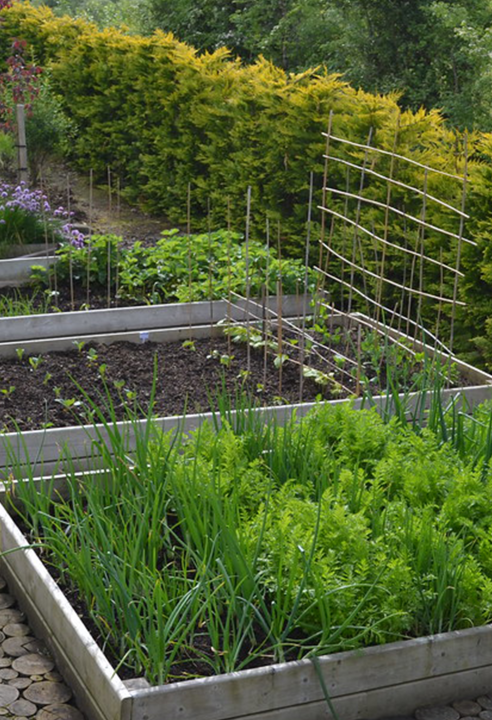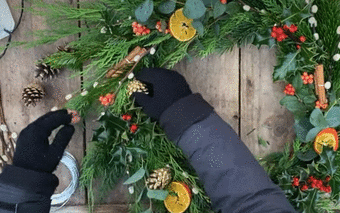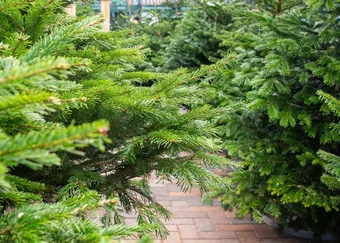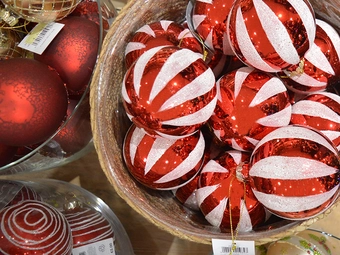Planning For The Season Ahead
In the depths of the winter, the last thing on your mind might be the garden and all the lushness of summer. But now is a wonderful time to plan for the season ahead; to buy seeds, make lists, plan your crop rotation and assess what worked well the previous year and what didn't. Best of all, you can do this from the comfort of your sofa, preferably with a cup of tea or coffee, and a nice biscuit (or three!).
Assess the previous year
If you've got photos of your garden/allotment/balcony, look back at them and see what worked well. Make a note of anything you would like to grow again, and if they are annuals, check your stash of seeds. Do you need more? Are the ones you have still viable? Some seeds will be fine past their best before date, but others lose their viability quicker. Perhaps there are some perennials you love having in the garden, but they're in
|
|
| the wrong place and will need moving in the spring. Or maybe they are in the right place but haven't been divided in a few years, and could benefit from a bit of a refresh. Make a note of which plants should be divided in the spring. This is a brilliant way to rejuvenate perennials. Because you get quite a few sections from a division, it means you have more plants, which you can use elsewhere in the garden or give to friends and family. |
Plan which seeds you'll need to sow
Now is the perfect time to to look through seed catalogues or gardening magazines, or peruse the seed section in the garden centre for inspiration of what to sow for this year. It's a good idea to make a list of what you intend to sow, and so you don't lose track of time, which month which you'll sow the seeds. The gardening year really kicks off into the spring, so it's handy to plan ahead now while you have more time. Seed packets give a general guideline of when is best to start sowing, but do bare in mind that the weather can push things back. Unless you have a heated greenhouse, heated propagator or some where else warm and bright, your seeds aren't likely to germinate as quickly.
If you're growing vegetables, make sure to grow things that you'll like and eat. Maybe even think ahead to some of your favourite recipes, what veg would you need to create those?
 |
 |
Plan your crop rotation on the veg plot
If you do grow veg, once you've selected what you would like to grow for the year, it's best to plan out where each crop is going. If you've made your list of seeds to sow, or pack veg to buy later in the season, use this as a guide. By rotating each season the different types of crops, you minimise the spread of soil borne pests and diseases to a particular family of vegetables. Things like artichokes, asparagus or soft fruit such as berries, currants and rhubarb will obviously stay in the same place, but the rest of your space can be divided up into 3 categories. 1) Potatoes, 2) Legumes, onions and root veg and 3) Brassicas. Legumes help to put nitrogen back into the soil, which in turn will help to feed your brassicas, so always make sure to plant brassicas where legumes were previously. The next time you grow veg, crop 1) would go into bed 3, 2) into bed 1 and 3) will go in bed 2, and so on.
And if you do feel like venturing outside...
If you've got a plethora of plant pots, it's best to plan now roughly what you'd like to plant in each, so you have an idea of the display you can create, and to ensure that you have enough pots (the right size). This is also a job for those with an indoor jungle too. Spring is the ideal time to repot houseplants, and when potting on you may need some more ceramic pots of various sizes. By sorting out what will go where now you'll save yourself the headache in a few months time.
This is also an ideal time to clean and sharpen tools, wash out empty plant pots to avoid the spread of pest and diseases, and to clean your greenhouse before it starts to fill up again with plants.
 |
So while it may seem like winter is a quiet time of year for the gardener, it needn't be! Planning ahead makes the growing season far more enjoyable and cuts out the stress. And it gives us a wonderful sense of hope for things to come. So get planning now, there's so much to look forward to!
 |




